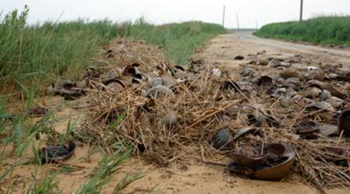 Contact: Matthias Obst, University of Gothenburg
Contact: Matthias Obst, University of Gothenburg
4-Oct-2010 Having survived for more than 400 million years, the horseshoe crab is now under threat – primarily due to overharvest and habitat destruction. However, climatic changes may also play a role. Researchers from the University of Gothenburg reveal how sensitive horseshoe crab populations are to natural climate change in a study recently published in the scientific journal Molecular Ecology. The horseshoe crab is often regarded as a living fossil, in that it has survived almost unchanged in terms of body design and lifestyle for more than 400 million years. Crabs similar to today’s horseshoe crabs were walking the Earth long before the dinosaurs. “Examining the genetic variation in populations of horseshoe crabs along the east coast of America has enabled us to track changes in population size over time,” says Matthias Obst from the Department of Zoology at the University of Gothenburg, one of the authors of the study published in Molecular Ecology. “We noted a clear drop in the number of horseshoe crabs at the end of the Ice Age, a period characterised by significant global warming.” … “Our results also show that future climate change may further reduce the already vastly diminished population. Normally, horseshoe crabs would have no problem coping with climate change, but the ongoing destruction of their habitats make them much more sensitive.” …
Climate change affects horseshoe crab numbers
Contact: Matthias Obst, University of Gothenburg